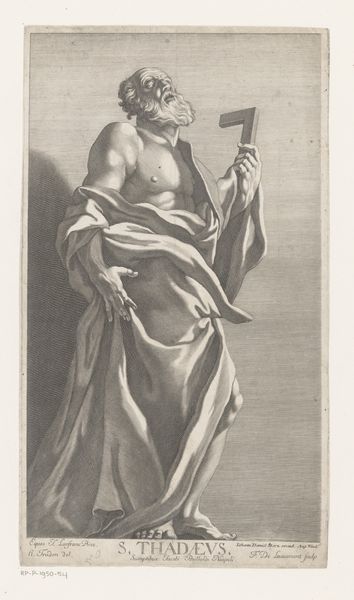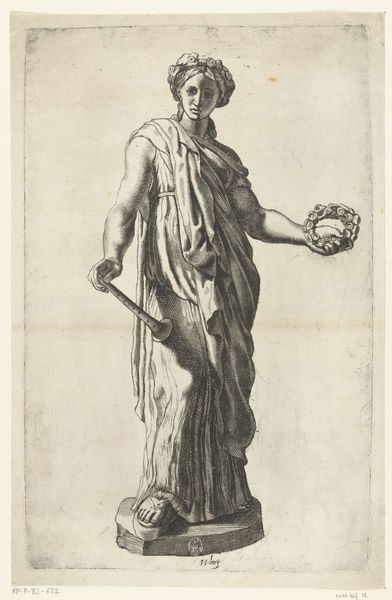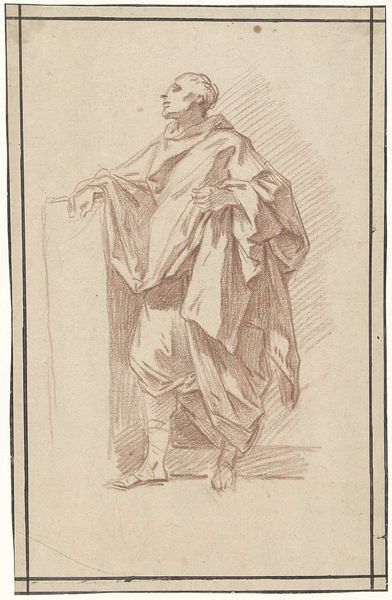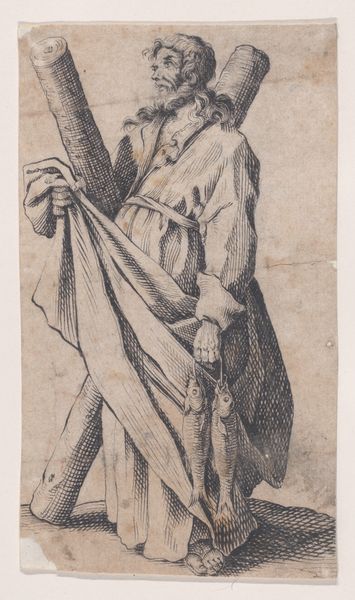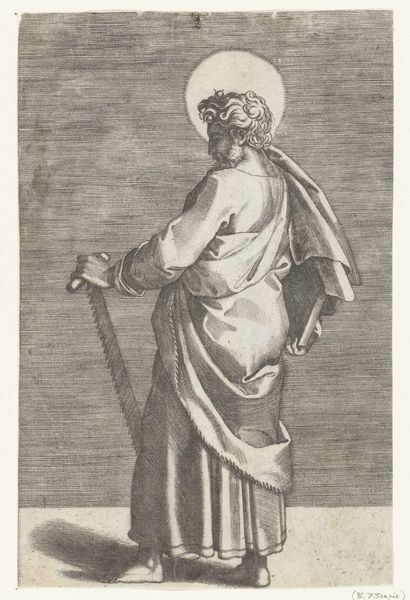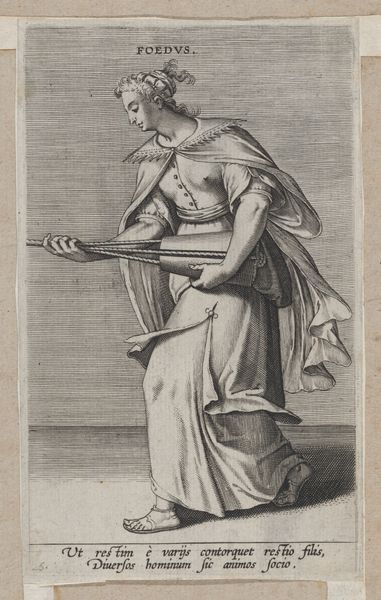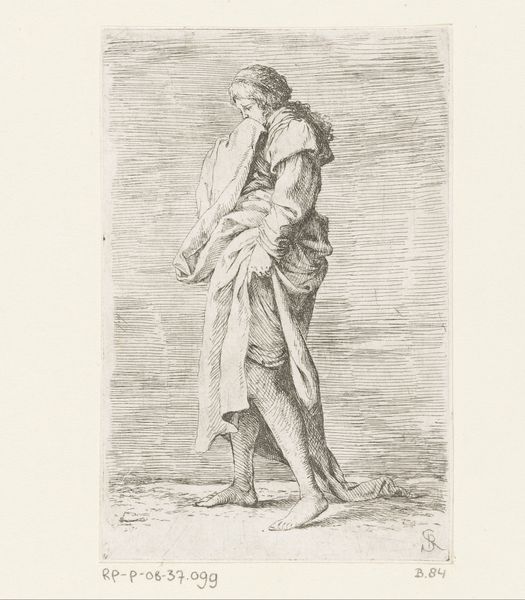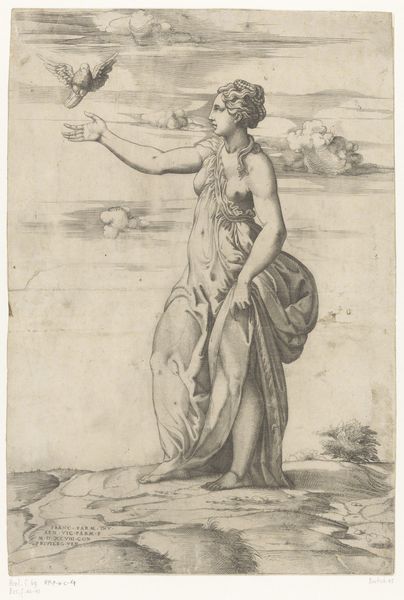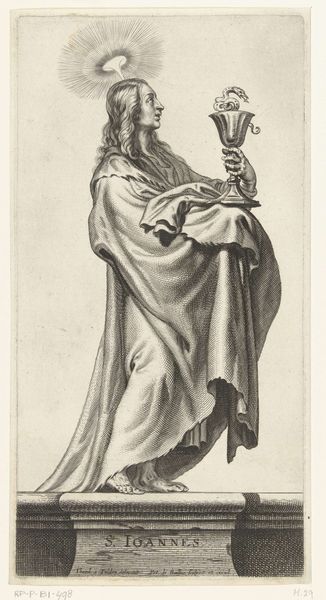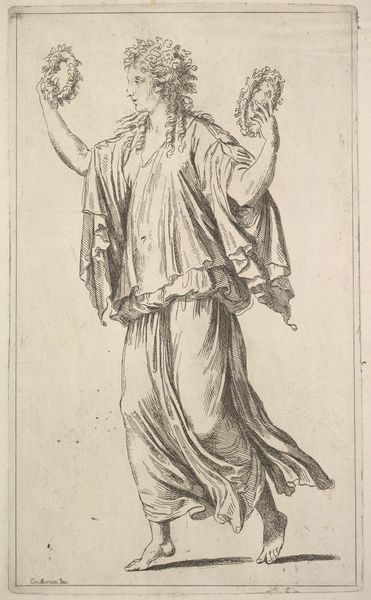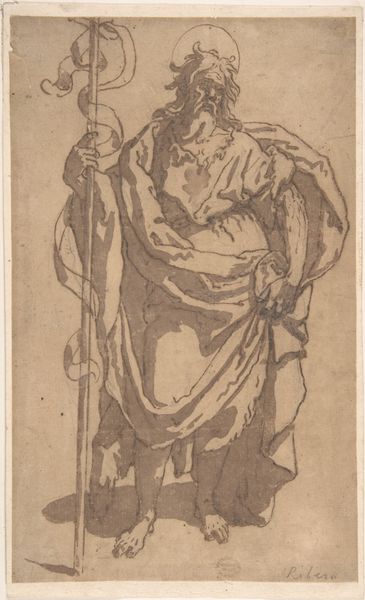
drawing, print, engraving
#
drawing
# print
#
figuration
#
history-painting
#
graphite
#
engraving
Dimensions: height 437 mm, width 254 mm
Copyright: Rijks Museum: Open Domain
Curator: What an image! Valentin Daniel Preissler's "Johannes de Doper", created around 1758, presents John the Baptist in a rather classical style, don't you think? Editor: Stark and a touch severe, perhaps fitting for the subject. The composition is compelling; the use of engraving and graphite creates such tonal depth and highlights John’s physique in a captivating way. It immediately makes me consider the social context and labor involved in printmaking at that time. Curator: Absolutely. Consider the symbolic weight of the figure itself. John is positioned almost heroically, but he is also humble. Note how the cross on top of the staff isn’t overtly glorious; its unadorned state emphasizes his sacrifice, but also maybe the artist’s understanding of how accessible symbols are. Editor: It's a potent illustration, one certainly informed by history-painting. The artistic labor is clear—from initial sketch to final print. Did Preissler's workshop benefit from or exploit its workers? This work also challenges, I think, what we traditionally perceive as art, and what becomes a commodity through prints like this. It makes the idea accessible, if it sells, beyond traditional art circles. Curator: Indeed, the reproductive nature of prints expands the audience beyond the elite, it also influences the iconography and public perception of a saint and how this resonates or changes through distribution channels. This one is fascinating because it feels very baroque but at the same time so down-to-earth, as this message could be interpreted regardless of the production of this plate, in which some hands surely got some benefit in making it. Editor: I hadn’t considered the Baroque tension in that way! Now I see it too—that contrast makes this piece even more engaging to discuss. Curator: It just goes to show you—looking through different lenses truly brings a work to life. Editor: Agreed; it underlines that both material investigation and cultural knowledge are equally important.
Comments
No comments
Be the first to comment and join the conversation on the ultimate creative platform.

